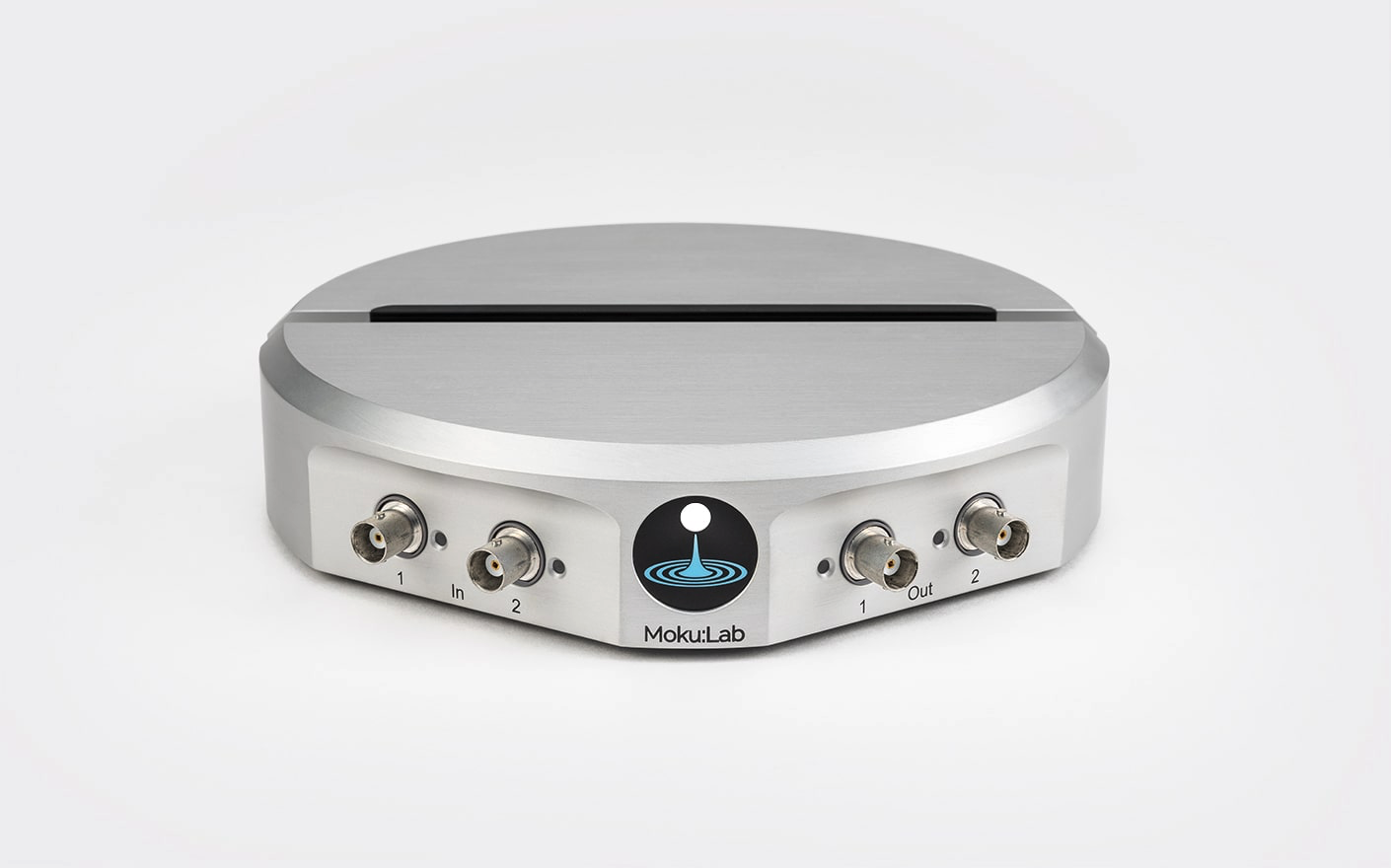Moku:Lab’s PID Controller
Compare all PID controllers
Overview
Moku:Lab’s PID Controller instrument features two fully configurable PID controllers with an output sample rate of 10 MSa/s. This enables them to be used in applications requiring both low and high feedback bandwidths such as laser temperature and current stabilization. The PID Controller can also be used as a lead-lag compensator by saturating the integral and differential controllers with independent gain settings.

Specs
Output sampling rate
10 MSa/s
Input voltage range
1 Vpp or 10 Vpp
Control matrix linear gain
-20 to +20
Input/output offset range
-1 to +1 V
Offset precision
100 µV
Proportional gain
-60 dB to 60 dB
Integrator crossover frequency
1 Hz to 100 kHz
Differentiator crossover frequency
10 Hz to 1 MHz
Key features
Versatile configuration options
2 input channels, 2 output channels, 2 independent PID controllers with control matrix for configurable combining of inputs
Gain profiles
Proportional (P), integral (I), differential (D), double-integral (I+), integral saturation (IS), differential saturation (DS)
Gain configuration
Real-time
Visualize your signal and configuration in real-time
Design your control system’s frequency response using the interactive Bode plot.
The interface displays a block diagram view of the digital signal processing with built-in probe points for signal monitoring.
Advanced multi-section PID builder
Includes single or double integrators and differentiators with low- and high-frequency gain saturation
Applications
Feedback and control systems design
Laser frequency stabilization
Temperature regulation
Pressure, force, flow rate, and other controls
Scan heads/sample stage positioning

Freedom in the lab when you need it
Configure two independent PID controllers and monitor your signal from anywhere in the lab with Moku software for iPad.
Try it in demo mode
Intuitive, even in the dark
Two independent, fully real-time configurable PID controller paths follow the control matrix in the block diagram, making it so easy to use that you can do it in the dark (mode).

PID response plot
An interactive representation (gain as a function of frequency) of the controller, the PID response plot makes it easy to adjust your configurations and see the changes in real-time.

Available on Moku:Lab hardware
The digital signal processing power of an FPGA coupled with the high-quality analog front-end ensures that with Moku:Lab you never have to sacrifice performance for flexibility.
Like Moku:Lab’s PID Controller?
View pricing Learn about Moku:Lab hardware
Or compare all hardware platforms


